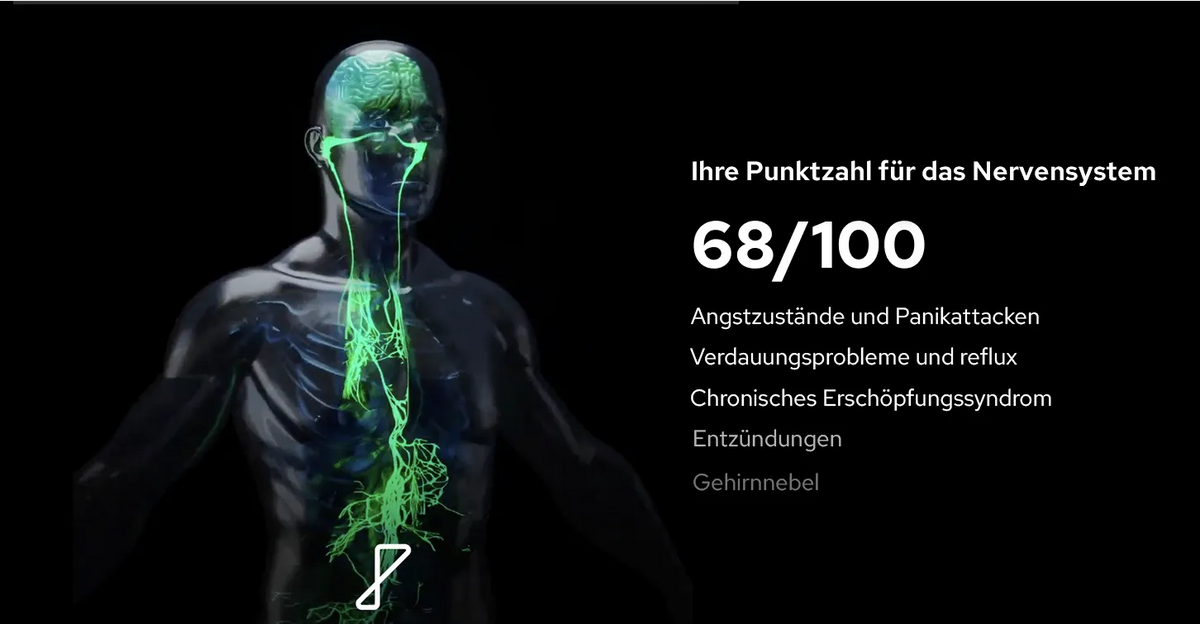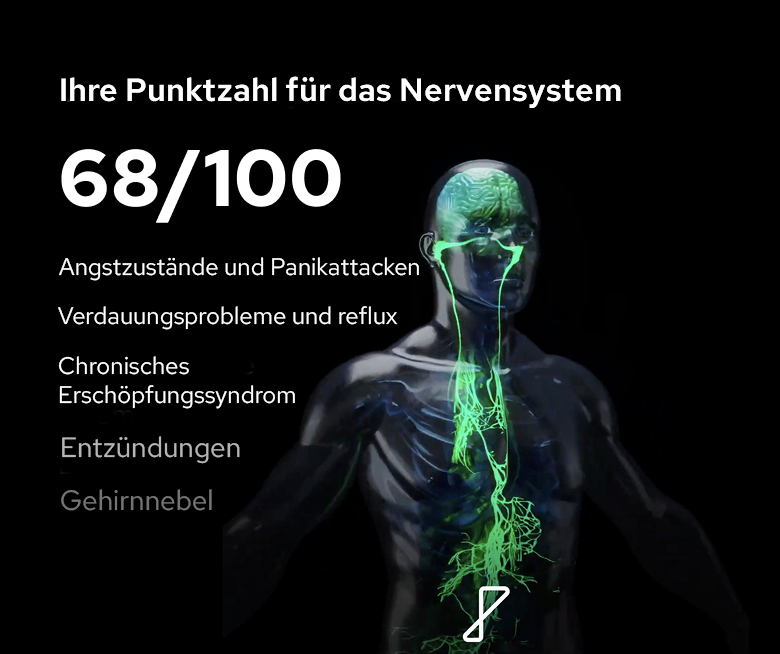Dr. Burchi über die transformative Wirkung von Nurosyms nicht-invasiver Technologie auf die psychische Gesundheit
Mentalerkrankungen nehmen zu. Laut der WHO lebte im Jahr 2019 eine von acht Personen – weltweit 970 Millionen Menschen – mit einer psychischen Störung, wobei Angst- und depressive Störungen die häufigsten sind. Dr. Burchi, MD, MBA und zertifizierte Psychiaterin, ist der Überzeugung, dass innovative Lösungen unerlässlich sind, um diese wachsende Krise anzugehen. Ihre Überzeugung resultiert aus der Beobachtung der Schwierigkeiten, denen Patienten begegnen, die oft herkömmliche Behandlungen als unzureichend empfinden.
Nurosym verändert die Spielregeln in der psychischen Gesundheitsversorgung, indem es einen nicht-invasiven Ansatz zur Vagusnervstimulation bietet. Was bei Nurosym besonders spannend ist, ist die erhebliche Investition in Forschung, mit 40 abgeschlossenen klinischen Studien und weiteren in Planung. Noch interessanter sind die hohen Erfolgsraten bei den Patienten, angesichts der weit verbreiteten Herausforderungen in der psychischen Gesundheitsbehandlung. Wir sprechen hier von Millionen erfolgreicher Patientensitzungen – über 3 Millionen, um genau zu sein!
Im Gespräch mit Healthnews spricht Dr. Burchi über die Herausforderungen bei der Behandlung psychischer Erkrankungen und das spannende Potenzial der Technologie von Nurosym. Sie beleuchtet den Weg des Unternehmens und teilt Einblicke, was es ihnen ermöglicht hat, herausragende Ergebnisse in der Behandlung psychischer Erkrankungen zu erzielen.
Q: Könnten Sie uns einen kurzen Überblick über Ihre Ausbildung geben und wie Ihr Karriereweg zu Ihrer jetzigen Rolle bei Nurosym geführt hat?
A: Ich bin Ärztin, habe einen MBA und bin zertifizierte Psychiaterin mit vielfältiger Erfahrung in klinischer Praxis, Neurowissenschaftsforschung und dem Biotechnologiesektor in Europa und den USA. Seit meiner Entscheidung, Ärztin zu werden, strebe ich danach, meine Praxis nicht nur auf individueller Ebene, sondern auch systemisch zu verstärken.
Nach Abschluss meines vollständigen Facharztausbildungsprogramms an der Universität Florenz in Italien und einer dreijährigen Forschungszeit am Einstein College of Medicine in den USA verfolgte ich einen MBA, um neue Fähigkeiten und innovative Methoden zu erlernen, um meine Praxis als Ärztin zu verbessern und systemische Veränderungen herbeizuführen, die möglichst vielen Patienten zugutekommen. 2021 schloss ich das INSEAD MBA-Programm ab, während ich weiterhin meine Privatpraxis führte.
Anschließend wechselte ich in den Biotechnologiesektor, wo ich Nurosym entdeckte. Da ich in die Forschung zur Neuromodulation involviert war, war ich begeistert von der Mission von Nurosym, ein eigenes, nicht-invasives, tragbares Neuromodulationssystem zu entwickeln, das die Gesundheit von Patienten und gesunden Menschen weltweit verbessern kann.
Derzeit ist Nurosym der Weltmarktführer in der nicht-invasiven vagalen Neuromodulation, und ich leite die Forschungsabteilung, die rund 100 akademische Partnerschaften verwaltet.
Q: Für diejenigen, die Nurosym nicht kennen, könnten Sie das Unternehmen vorstellen und Ihre einzigartige Rolle innerhalb der Organisation erklären?
A: Nurosym ist ein Neurotechnologieunternehmen und der Weltmarktführer in der nicht-invasiven vagalen Neuromodulation. Wir haben ein eigenes Neuromodulationssystem entwickelt, das in der Lage ist, den Vagusnerv sicher und effektiv über seinen aurikulären Ast am Tragus des Ohrs zu modulieren, mit potenziellen Anwendungen in zahlreichen klinischen Bereichen.
Ich bin derzeit Leiterin der Forschungsabteilung bei Nurosym und verwalte unser umfangreiches Netzwerk akademischer Partnerschaften weltweit.
Q: Sprechen wir über Depression. Warum steigen die Zahlen für diese Erkrankung so stark an, oder könnte es sich um Fehldiagnosen oder Überdiagnosen handeln?
A: Depression ist eine klinische Erkrankung, die es schon immer in der Menschheitsgeschichte gab. Der Anstieg der Fälle in den letzten Jahren ist teilweise auf ein größeres Bewusstsein und eine Sensibilisierung für psychische Gesundheit zurückzuführen. Darüber hinaus haben Faktoren wie stressige Lebensstile und der Verlust sozialer und natürlicher Verbundenheit zu einem realen Anstieg der Fälle beigetragen.
Trotz der steigenden Zahlen ist es sehr unwahrscheinlich, dass die Prävalenz der Major Depression überschätzt wird. Tatsächlich werden psychische Erkrankungen oft übersehen, was dem anhaltenden Stigma im Bereich der psychischen Gesundheit zuzuschreiben ist.
Q: Nurosym berichtet über 3 Millionen erfolgreiche Patientensitzungen, was eine beachtliche Leistung ist! Was, glauben Sie, hat zu dieser hohen Akzeptanz beigetragen?
A: In erster Linie die Sicherheit und Wirksamkeit unserer Technologie bei der Erreichung der beabsichtigten Ergebnisse. Der Vagusnerv spielt eine Rolle in vielen physiologischen Funktionen und ist oft ausschließlich in bestimmte Prozesse involviert, was bedeutet, dass es keine Redundanz in unserer Physiologie gibt.
Folglich wird der parasympathische Tonus, der vom Vagusnerv gefördert wird, häufig durch mehrere gegenläufige Mechanismen unterdrückt. Unsere Fähigkeit, die Funktion des Vagusnervs auf nicht-invasive und benutzerfreundliche Weise zu modulieren, erklärt den weit verbreiteten Erfolg, den wir erzielt haben.
Q: Angesichts Ihres Hintergrunds in Psychiatrie und Neuromodulation: Wie sehen Sie den Einfluss der Technologie von Nurosym auf die Behandlung psychischer Erkrankungen, insbesondere bei Depression und Angst?
A: Nurosym hat großes Potenzial im Bereich der psychischen und neurologischen Gesundheit. Während die invasive Vagusnervstimulation ursprünglich zur Behandlung von Epilepsie und therapieresistenter Depression zugelassen wurde, erhöht unser nicht-invasiver Ansatz den Zugang zu dieser Technologie erheblich.
Wir haben mehrere Studien veröffentlicht, die zeigen, wie Nurosym Angstzustände, Stimmungssymptome und kognitive Funktionen bei verschiedenen klinischen Zuständen sowie bei gesunden Menschen verbessern kann. Mechanistisch gesehen werden diese Effekte wahrscheinlich direkt durch neuroplastische Wirkungen und indirekt durch die Modulation des autonomen Tonus und entzündungshemmende Effekte vermittelt.
Q: Mit 40 abgeschlossenen klinischen Studien und 60 weiteren in der Pipeline: Warum ist Nurosym so stark in klinische Forschung involviert? Können Sie uns einige Einblicke in Ihre Forschung geben?
A: Nurosym ist bestrebt, die Gesundheit der meisten Menschen zu verbessern, indem es eine einfach zu bedienende Technologie für den Heimgebrauch bereitstellt und weltweit zahlreiche akademische Partnerschaften fördert. Wir haben über 40 Studien veröffentlicht und sind derzeit in etwa 100 laufende Forschungspartnerschaften eingebunden.
Die Vielseitigkeit unseres Ansatzes und die Vielzahl der Mechanismen, die er anspricht – von der Neumodulation des autonomen Tonus bis hin zu systemischen entzündungshemmenden Effekten – ermöglichen eine Anwendung bei einer Vielzahl von Erkrankungen. Dazu gehören Herz-Kreislauf- und psychische Gesundheitsprobleme sowie die Erholung nach dem Sport, alles mit minimalen bis keinen Nebenwirkungen.
Eine der überraschendsten Entdeckungen war die schnelle Remission der wichtigsten Long-COVID-Symptome, wie Müdigkeit und kognitive Dysfunktion, nach nur zehn Tagen Intervention.
Q: Long COVID war ein umstrittenes Thema, aber Nurosym hat sich dem nicht entzogen. Können Sie uns mehr über Ihre Arbeit in diesem Bereich erzählen?
A: Long COVID wird typischerweise durch den Ausschluss anderer Erkrankungen diagnostiziert, aber es ist eine anerkannte Krankheit mit erheblichen Auswirkungen auf die globale Gesundheit. Nach der COVID-19-Pandemie zeigten Studien, dass etwa 10–20 % der mit SARS-CoV-2 infizierten Personen anhaltende oder wiederkehrende Symptome entwickeln könnten, die charakteristisch für Long COVID sind.
Bei Nurosym haben wir die Anwendung der Neuromodulation zur Bekämpfung von Long COVID vorangetrieben und mehrere erfolgreiche Studien veröffentlicht, die eine Remission der wichtigsten Symptome, einschließlich Müdigkeit und kognitive Dysfunktion, nach nur zehn Tagen Behandlung zeigen.
Q: Erforscht Nurosym den Bereich der Langlebigkeits- und Anti-Seneszenz-Therapie? Der Markt wird voraussichtlich bis 2031 auf 82,12 Milliarden USD anwachsen. Was denken Sie über diese Chance?
A: Die Medizin hat sich allmählich von der reinen Krankheitsbehandlung hin zu einem ganzheitlicheren Ansatz entwickelt, der auch das Risikomanagement und die Prävention von Krankheiten umfasst. Ich denke, es ist an der Zeit, noch weiter zu gehen und eine „positive Medizin“ anzustreben, die darauf abzielt, das Wohlbefinden des Einzelnen zu steigern.
Seit seiner Gründung verfolgt Nurosym diesen Weg, indem es die Auswirkungen unserer therapeutischen Strategie auf die Herzratenvariabilität (HRV), einen Indikator für die kardiovaskuläre Fitness, untersucht. Wir intensivieren nun unsere Bemühungen, die Technologie von Nurosym als Strategie zur Förderung des Wohlbefindens zu nutzen und Bereiche wie Körpererholung, Schlafqualität, kognitive Verbesserung sowie kardiovaskuläre und metabolische Fitness zu fördern.
Nachgedruckt von HealthNews:
Dieser Artikel wurde ursprünglich auf HealthNews veröffentlicht. Er wurde hier mit Genehmigung nachgedruckt.



